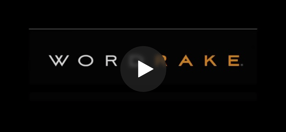Do Quotation Marks Go inside or outside a Period?
Although logic usually determines how we punctuate English, where we place quotation marks often defies that logic. At least in America. That’s why several of you have written to me lately to ask, “So what’s up with people putting periods outside the quotation mark?” The answer is: Either you are reading someone who made a mistake, or the writer is British. Or Canadian or Australian. Their system makes much more sense, but to keep a small piece of our sanity (and assuming we’re American) let’s continue to follow the American style. We don’t spell favor with a “u” just because the British do.
As The Chicago Manual of Style explains, “In defense of nearly a century and a half of the American style, however, it may be said that it seems to have been working fairly well and has not resulted in serious miscommunication.” I.e., no one has died yet. When people start dying, we will switch to the British style. In the meantime.
Back to Basics
We have two kinds of quotations, direct and indirect. An indirect quotation sounds like this and requires no quotation marks:
Bob Dylan said he now prefers electric over acoustic.
A direct quotation sounds like this and requires quotation marks:
Bob Dylan said, “I now prefer electric over acoustic.”
The Burning Questions:
When do we place a comma before the quotation?
If the word said or a similar word precedes the quotation:
When Victoria entered, the chambermaid exclaimed, “But I shan’t be ready for another quarter of an hour, Your Highness!”
If the quotation blends with the sentence, you do not need a comma.
Mark Twain once opined that the two most important days of your life are “the day you are born and the day you find out why.”
How do we punctuate longer quotations?
Instead of enclosing longer quotations in quotation marks, we should indent them. Authorities differ slightly, but longer means poetry of three or more lines and prose of two or more sentences that run at least five lines. Introduce the offset quotation with a sentence ending in a colon:
According to his longtime producer, Woody Allen has written, produced, directed, and sometimes starred in a movie almost every year since the 1980s:
Where do we put the closing quotation mark?
In America, no matter how the material inside the quotation relates to the rest of a sentence (even if it’s only one word), the closing quotation mark always goes outside a comma or a period. It always goes inside a colon or a semicolon:
When Tamika said, “I’ll be all right, ” she did not know her cat had swallowed a hairball.
I was in the den reading Poe’s “The Telltale Heart ”; I didn’t even hear the screams emanating from the microwave.
Whether a quotation mark goes inside or outside a question mark (or dash or exclamation point) depends. If the sentence is not a question, but the quotation is a question, put the question mark inside, the quotation mark outside:
Georgina came running through the living room, yelling, “Where’s Jerome? ”
If the sentence is a question and the quotation is also a question, again put the question mark inside, the quotation mark outside, and do not follow it with another question mark.
Who do you think finally asked, “Could the problem be with the ignition?”
But if the sentence is a question, and the quotation is not, put the quotation mark inside, the question mark outside:
Do you remember who said, “Give me liberty or promise me you’ll protect me and provide me with a lot of cash”?
If the quotation appears first and is a question, the question mark goes inside, the quotation mark outside, and it is not followed by a period or comma:
“What can I do for my country?” Kennedy urged American youth to ask.
Parting Points
To include a quotation within a quotation, enclose it with single quotation marks:
Then the speaker added, “As many of you know, Einstein once said, ‘The only reason for time is so that everything doesn’t happen at once. ’”
Enclose the titles of the following in quotation marks:
songs, essays, short stories, television episodes, short poems, chapters in a book, magazine and newspaper articles
Last, if you want to highlight a word or short phrase for emphasis, instead of using quotation marks, I would italicize. It’s cleaner. But make sure you need to emphasize.





